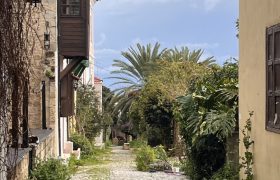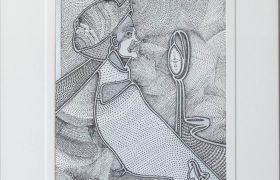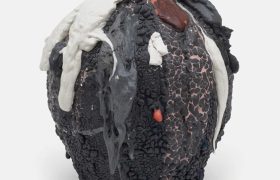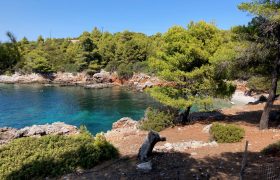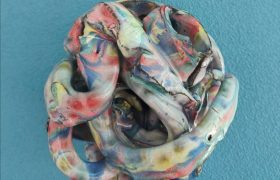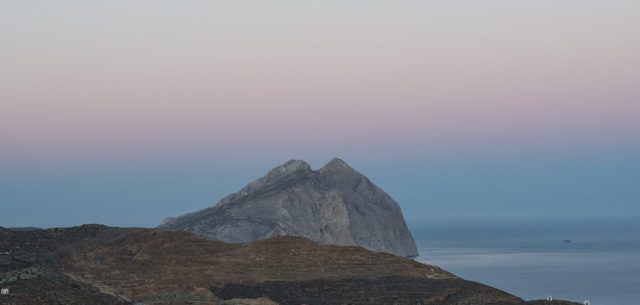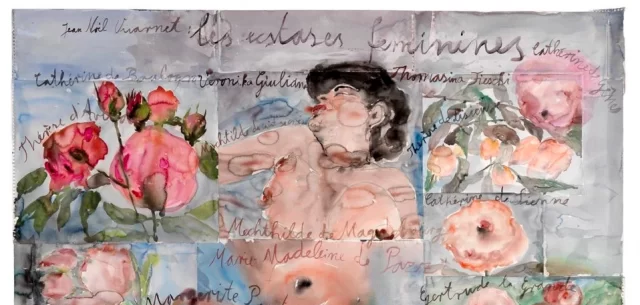Wall Street Banker to Artist: George Petrides Channels Millenia of Greek History in ‘Hellenic Heads’ Venice Exhibit
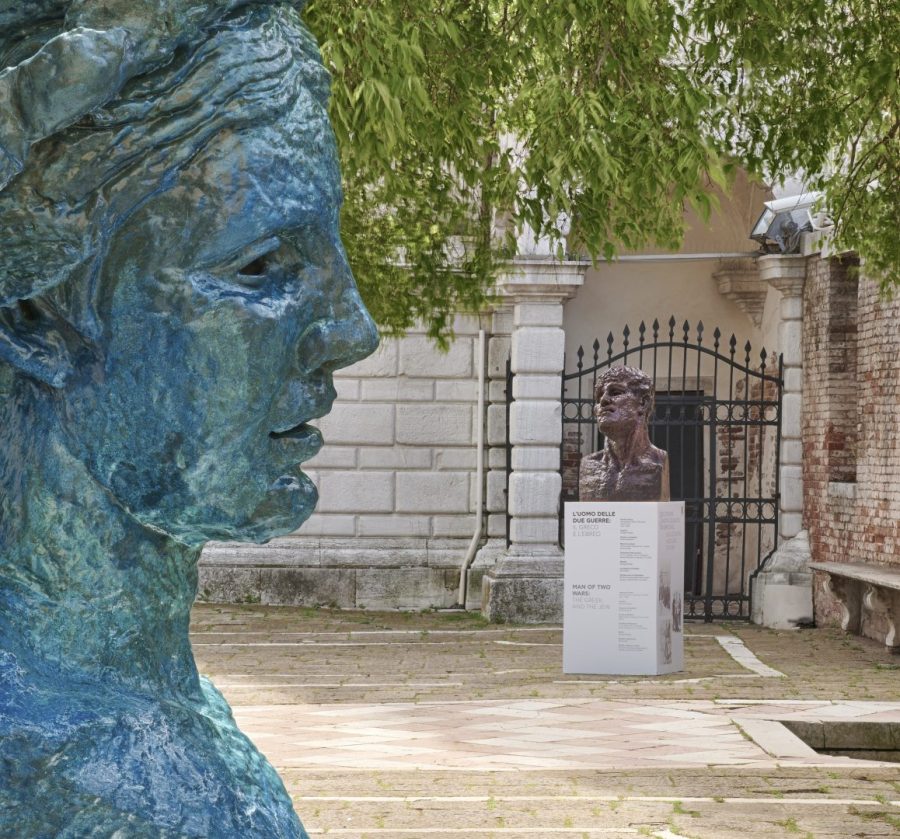
By Maya Abuali
In the serene courtyard of San Giorgio dei Greci, an ancient Greek church nestled in Venice, George Petrides’ sculptures stand as silent sentinels, bridging ancient sensibilities with modern techniques. His monumental itinerant exhibition, “Hellenic Heads: A Personal Exploration of Greek History and Culture over 2,500 Years,” thoughtfully entwines the past and the present. Running to November 24, 2024, the exhibition brings forth themes of struggle, resilience, and identity through six oversized busts, each towing over two metres tall.
Born in Athens in 1964 and raised between Greece and New York, George Petrides’ life is as eclectic as his art. After a successful career on Wall Street, Petrides pursued his passion for art, studying at the New York Studio and L’Academie de la Grande Chaumière in Paris. His work, heavily influenced by Greek and Roman sculpture, Renaissance artists like Donatello and Michelangelo, and modern sculptors such as Rodin, resonates most profoundly with Greek antiquity.
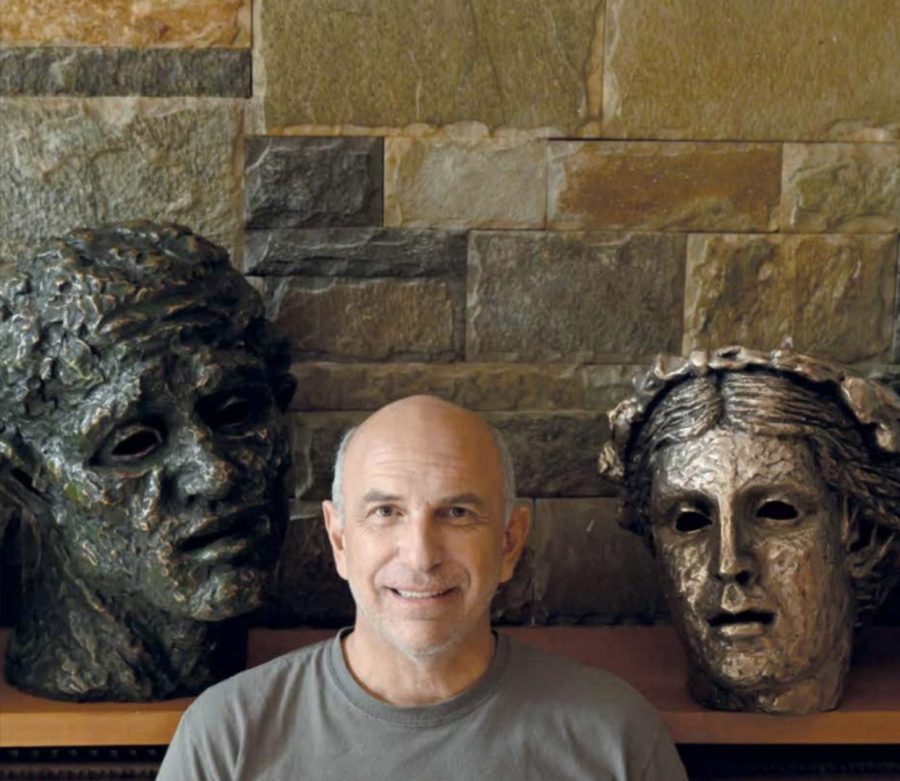
“If you are Greek, you can’t help but be inspired by antiquity. There is nothing like going back to ancient times,” Petrides said.
With their historical weight, Petrides’ works find a fitting home in Venice within a setting that mirrors their fabled nature. San Giorgio dei Greci, an architectural relic from the Middle Ages, now serves as a vista to Petrides’ haunting sculptures. The church, which adjoins the Hellenic Institute of Byzantine and Post-Byzantine Studies, is a short stroll from the Arsenale, the heart of Venetian history. With its abandoned shipyards and armouries, the former setting of Venetian naval power embodies many of Petrides’ motifs, from the role of women in ancient society to the enduring scars of antisemitism and the plight of refugees.
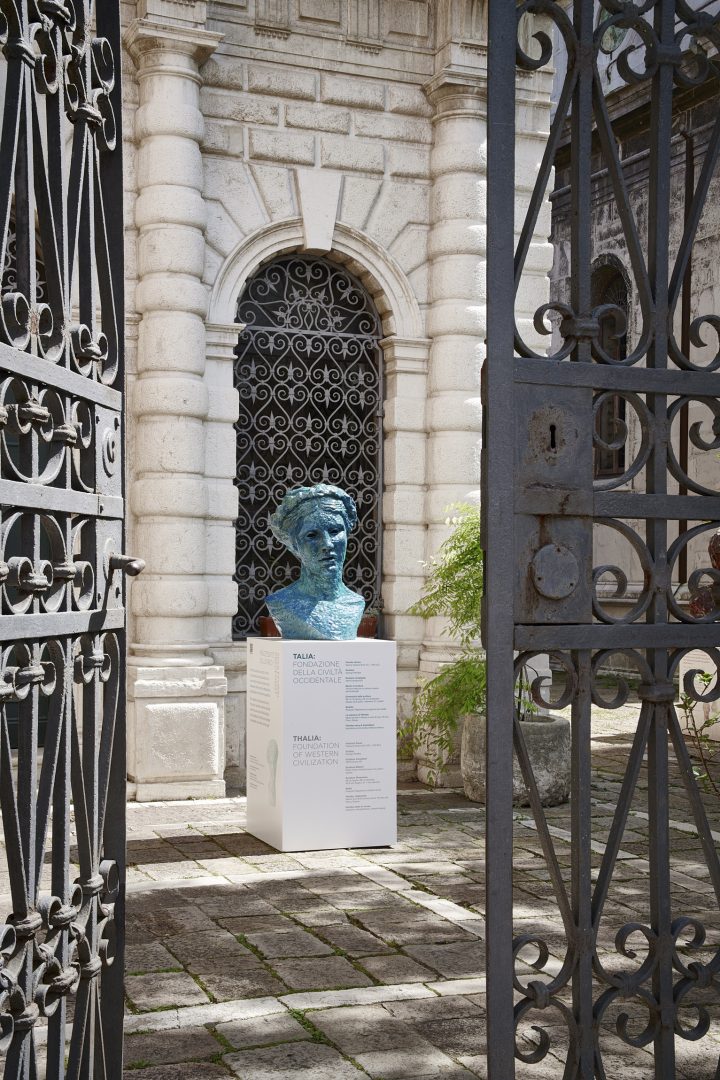
Grounded in specific historical periods, Petrides’ busts emerge from his lifelong meticulous study of sculptural masterpieces, archaeological artefacts, historic photographs, and academic sources. His creative process blends traditional and contemporary methods, beginning with hand-moulded clay busts and culminating in bronze casts. Petrides excavates these ancient techniques to use with modern technology.
Central to Petrides’ exhibition are the staggering women represented in his Hellenic Heads series, which he says are an exploration of his Greek roots. The oversized head sculptures are inspired by six important periods in Greek history: the Classical Period, the Byzantine Period, the Greek War of Independence, the Destruction of Smyrna, the Nazi occupation and Greek Civil War, and the present.
“This series is a vehicle for, and the result of, my search for the Greek influences that have shaped me and the people closest to me,” Petrides explains.
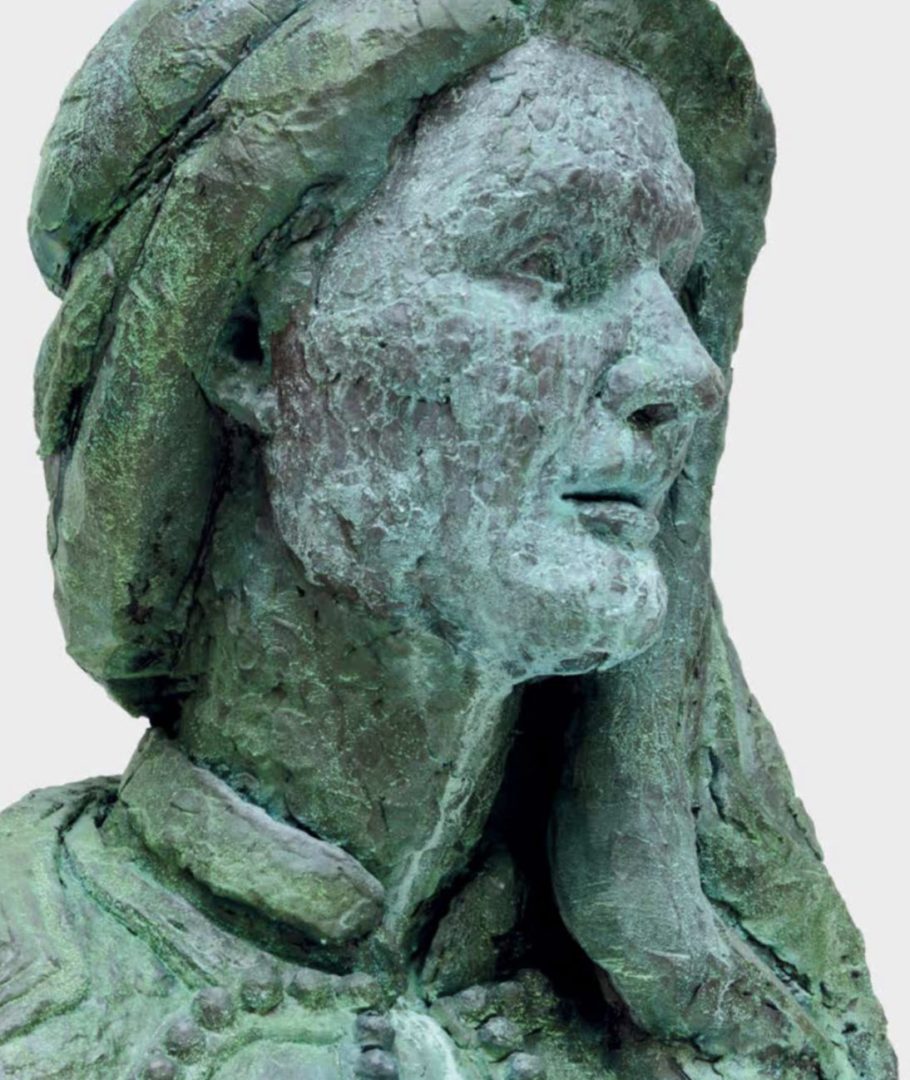
These sculptures, with their textured, patina painted surfaces in shades of green and blue, exude an aura of agedness and reverence. But why specifically human heads?
“I find my fellow human beings to be the most fascinating, difficult, and rewarding subject. Relationships are important to me in every aspect of my life, which is not to imply that I always succeed at them. I often experience an inability to understand or to connect, which probably drives my interest in figurative sculpting. As to the head specifically: It is the most human part of the human, the most expressive and the most difficult to convey and the most interesting when the conveyance succeeds. Every single one of my sculptures in this series is inspired not only by historical research but also by someone in my life. That’s what keeps it interesting for me.”
The busts are modelled after his family members, some of whom live, and some who were sculpted from photographs and memory. His mother stands classical style in a regal turquoise blue, while his daughter incarnates the future in a golden hue. The reverential touch of a father’s hand is everywhere in these busts.
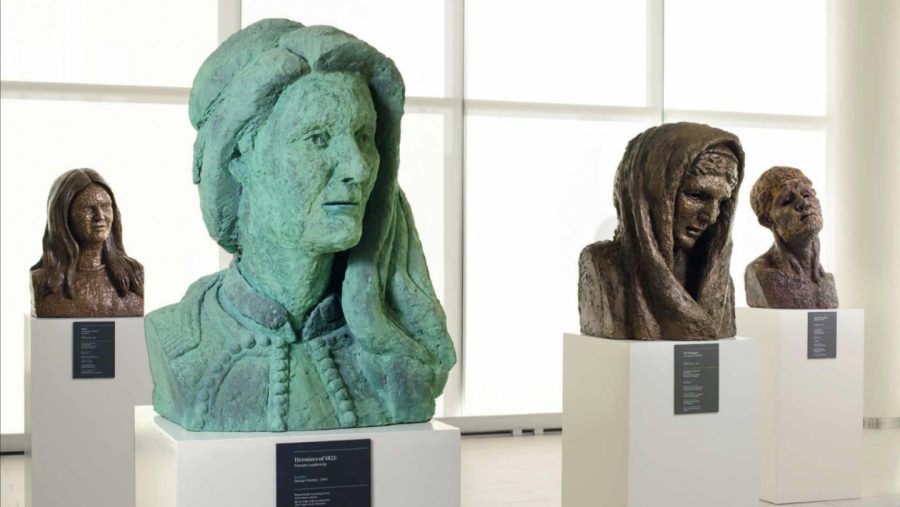
Four of the six more than double life-sized Hellenic Heads are women. In his retelling of Greek history through his art, Petrides seems intent on carving a distinctly matriarchal gaze. One such head titled ‘Heroines of 1821’ rises up in honour of the women who fought alongside male soldiers in the Greek War of Independence in the early 19th century. Another, ‘The Refugee,’ tenderly depicts his grandmother’s struggling expression in bronze and black wax as she flees the fires of Smyma when the Turkish military captured the city in 1922. In each bust, Petrides casts a discernible familiarity while appreciating the delicate grains of its historical context.
A contemporary Prometheus, Petrides forms each of his works with clay before using technology to advance it into its ultimate Bronze form. A Hellenic Head’s formation begins with clay and an armature, where Petrides, moving around the unfolding form, sculpts the raw material with his hands. This physical engagement with clay is where historical narratives begin to take shape. When he casts the work in Bronze, he uses the ancient Greek lost-wax process of pouring molten metal into a wax model mould. Originating with the Hittites, an ancient group of Indo-Europeans who moved into Asia Minor and formed an empire in Anatolia (modern Turkiye) around 1600 BCE, Greek sculptors like Petrides have continued to refine these casting methods into present-day.
“Often the final form is cast in bronze, using the same lost-wax process that was used by the ancient Greeks 2,500 years ago,” the artist says.
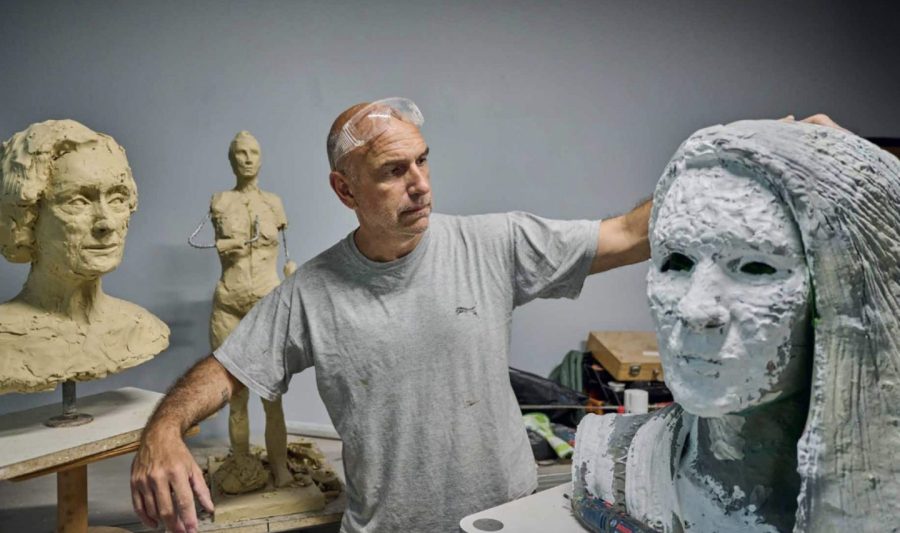
Petrides uses digital technology to refine his sculptures, allowing for adjustments in scale, form, and colour. A digital scan transforms the clay model into a 3D-printed object, which then serves as a precursor to the final bronze cast. Technology is an essential part of Petrides’ practice, allowing for nuanced alterations like elongating a neck or veiling a face.
“All of my castings to date have been done in Greece. [….] From beginning to end, a piece can take a year and a half to make, from the first handful of clay to the piece ready for its exhibition.”
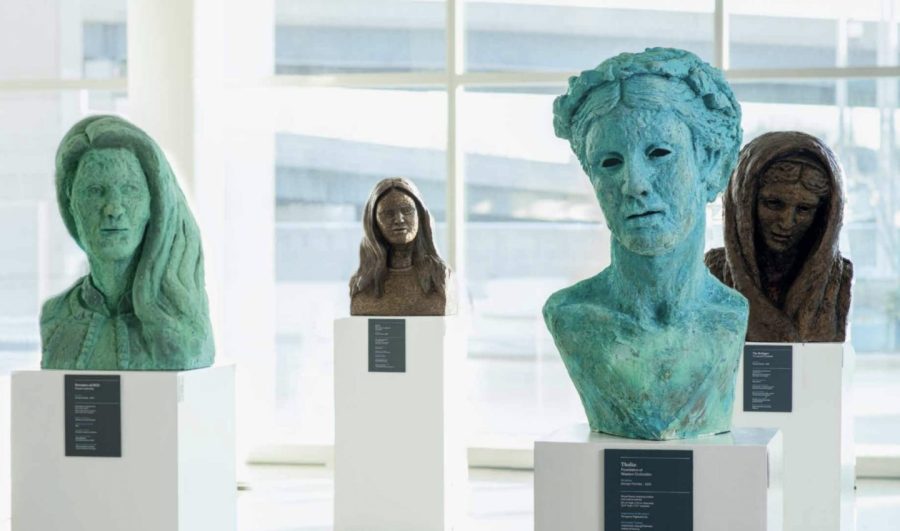
As he works to bring these heads to life, Petrides straddles multiple eras simultaneously. The resulting series is an unmissable array of formidable yet graceful sculptures that paradoxically lure viewers to the past and urge them into the future.
Gazing upon Petrides’ work is a reflective exercise; it forces one to examine how history’s darkest shadows may bleed into humankind today. Just as Petrides melded these sculptures in archaic style, so too does humanity continue to form on the basis of all that is old. It forces us to question: Is it intrinsic in our nature to mar each other with war and darkness? Is advancement a myth, or can we use our modern sensibilities to forge our way to compassion?
“Hellenic Heads” is on view until November 2024.

